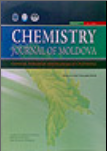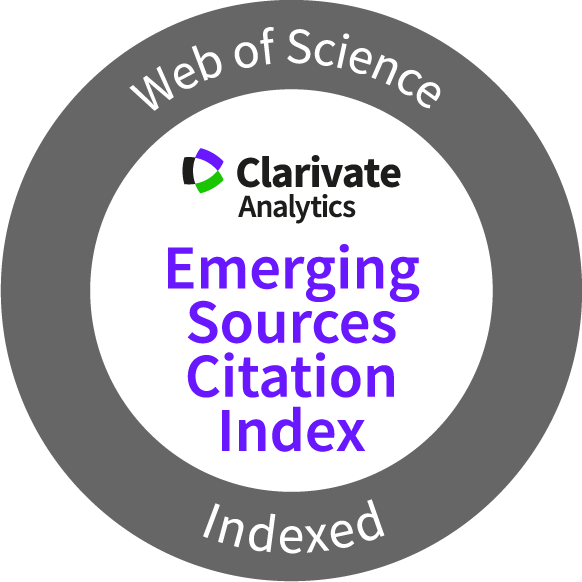Chemistry Journal of Moldova
Natural product chemistry and synthesis
Author(s):
Field: Natural product chemistry and synthesis
Type: Research paper
Issue: 2019 Volume 14, no.2
Pages: 72-78
Svetlana Blaja
Field: Natural product chemistry and synthesis
Type: Research paper
Issue: 2019 Volume 14, no.2
Pages: 72-78
Full Text (PDF): Download
Abstract (PDF)
Graphical Abstract: TThe present paper reports the synthesis of new hybrid terpeno-heterocyclic compounds belonging to di- and tri-norlabdane series. Starting from natural labdane diterpenoide (-)-sclareol, via its intermediates 8α-hydroxy-15,16-dinorlabd-13-one and sclareolide, two di-norlabdane and three tri-norlabdane, previously unreported compounds possessing 2-amino-1,3-thiazole structural units were obtained in three and four steps, respectively, with acceptable to good overall yields. The structures of newly obtained compounds were confirmed by means of spectral IR, 1H and 13C NMR analyses.

Graphical Abstract: TThe present paper reports the synthesis of new hybrid terpeno-heterocyclic compounds belonging to di- and tri-norlabdane series. Starting from natural labdane diterpenoide (-)-sclareol, via its intermediates 8α-hydroxy-15,16-dinorlabd-13-one and sclareolide, two di-norlabdane and three tri-norlabdane, previously unreported compounds possessing 2-amino-1,3-thiazole structural units were obtained in three and four steps, respectively, with acceptable to good overall yields. The structures of newly obtained compounds were confirmed by means of spectral IR, 1H and 13C NMR analyses.

Downloads: 183
Author(s):
Field: Natural product chemistry and synthesis
Type: Invited paper
Issue: 2019 Volume 14, no.2
Pages: 9-31
Margherita Gavagnin, Marianna Carbone, Maria Letizia Ciavatta, Ernesto Mollo
Field: Natural product chemistry and synthesis
Type: Invited paper
Issue: 2019 Volume 14, no.2
Pages: 9-31
Full Text (PDF): Download
Abstract (PDF)
Graphical Abstract: Heterobranchs are a fascinating group of marine mollusks that are recognized as an important source of bioactive natural products. Often, these molecules, which are either selected from the diet or de novo biosynthesized by the mollusks, play a fundamental role for their survival being utilized as defensive chemicals against predators. A summary of the studies carried out, in the last decade, on heterobranchs is presented here. A number of new compounds exhibiting different molecular architectures were chemically characterized.

Graphical Abstract: Heterobranchs are a fascinating group of marine mollusks that are recognized as an important source of bioactive natural products. Often, these molecules, which are either selected from the diet or de novo biosynthesized by the mollusks, play a fundamental role for their survival being utilized as defensive chemicals against predators. A summary of the studies carried out, in the last decade, on heterobranchs is presented here. A number of new compounds exhibiting different molecular architectures were chemically characterized.

Downloads: 107
Author(s):
Field: Natural product chemistry and synthesis
Type: Research paper
Issue: 2018 Volume 13, no.2
Pages: 63-68
Alexandru Ciocarlan, Ion Dragalin, Aculina Aricu, Lucian Lupascu, Nina Ciocarlan, Violeta Popescu
Field: Natural product chemistry and synthesis
Type: Research paper
Issue: 2018 Volume 13, no.2
Pages: 63-68
Full Text (PDF): Download
Graphical Abstract: The chemical composition of industrially obtained Levisticum officinale W.D.J. Koch (lovage) essential oil of Moldovan origin was analysed by means of chromatographic (GC-MS) and spectral (IR, 1H and 13C NMR) methods. The obtained results show that the main components of L. officinale essential oil are monoterpenic hydrocarbons which make up to 53.50% of the total number of components. L. officinale essential oil is also characterized by a high content of oxygenated monoterpenes (alcohols, cetones and esters), which reaches up to 33.60%. For the first time the presence of 6-butyl-cyclohepta-1,4-diene (0.56%) and 7-formyl-4-methyl-cumarine (0.15%) in lovage essential oil is reported. Antibacterial and antifungal activities of mentioned oil were evaluated in vitro on five strains of microorganisms. It was found that lovage volatile oil (L .officinale) exhibits high antibacterial and antifungal properties in the range of concentrations 0.015-0.030%.


Downloads: 253
Author(s):
Field: Natural product chemistry and synthesis
Type: Review
Issue: 2018 Volume 13, no.2
Pages: 8-23
Benalia Yabrir
Field: Natural product chemistry and synthesis
Type: Review
Issue: 2018 Volume 13, no.2
Pages: 8-23
Full Text (PDF): Download
Graphical Abstract: This paper reviews information on essential oil of Marrubium species (except M. vulgare) described until now regarding extraction, chemical composition and biological activities. Marrubium essential oils, although quantitatively poor, are rich in chemical composition. This composition consists especially of sesquiterpenoids and a little amount of monoterpenes. It varies from one species to another, sometimes within same species. Marrubium essential oils exhibit antioxidant and antimicrobial activities. However, because the lack of literature concerning essential oil of these species, further studies are necessary, particularly regarding their activities.
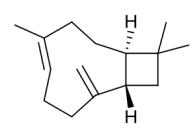

Downloads: 182
Author(s):
Field: Natural product chemistry and synthesis
Type: Research paper
Issue: 2018 Volume 13, no.1
Pages: 63-68
Alexandru Ciocarlan, Ion Dragalin, Aculina Aricu, Nina Ciocarlan, Cristina Stavarache, Mariana Deleanu
Field: Natural product chemistry and synthesis
Type: Research paper
Issue: 2018 Volume 13, no.1
Pages: 63-68
Full Text (PDF): Download
Graphical Abstract: The present paper describes biochemical (fatty oil) composition of Silybummarianum (L.) Gaertn. of Moldovan origin. The oil content of the seeds was approximately 25%. Linoleic acid (C18:2), an essential polyunsaturated fatty acid, is the most abundant (48.88%), followed by monounsaturated oleic acid (C18:1, 31.94%) and saturated palmitic acid (C16:0, 7.61%). The RP-HPLC analysis of tocopherols composition, showed as main components α-tocopherol (23.45 mg/100g) and γ–tocopherol (5.60 mg/100g). Based on the obtained results, it was shown that the extracted oil from milk thistle seeds is rich in essential fatty acids (about 50%) and tocopherols (29.09 mg/100g) and it can be used in food preparation.


Downloads: 199
Author(s):
Field: Natural product chemistry and synthesis
Type: Research paper
Issue: 2017 Volume 12, no.2
Pages: 50-57
Nassiba Fekhar, Hocine Boutoumi, Mohamed Krea, Saâd Moulay, Drioueche Asma, Zoubir Benmaamar
Field: Natural product chemistry and synthesis
Type: Research paper
Issue: 2017 Volume 12, no.2
Pages: 50-57
Full Text (PDF): Download
Graphical Abstract: Essential oils were extracted from Artemisia herba-alba L. and Ruta montana L. by means of steam distillation and thionated with a reagent combination of phosphorus pentasulfide and sodium bicarbonate. Both parent essential oils and their modified ones were screened for their biological and insecticidal activities. The results showed that essential oils were composed mainly of ketones; essential oils from Artemisia herba-alba L. and those from Ruta montana L. consisted of bicyclic monoterpenes and acyclic aliphatic ketones (thujone, camphor and 2-undecanone), respectively. The antimicrobial activity of essential oils was substantially improved upon thionation (from 10 to 34 mm and from 11 to 32 mm). The insecticidal effect of the thionated essential oil from Ruta montana L. was observed to be very significant, but that of the essential oil from Artemisia herba-alba L. was observed to decrease (from 100% to 70% after 24 hrs. The extracted essential oils as well as their thionated forms were characterized by GC-MS, FT-IR, and UV-visible.


Downloads: 198
Author(s):
Field: Natural product chemistry and synthesis
Type: Short communication
Issue: 2016 Volume 11, no.2
Pages: 105-108
Ion Dragalin, Aculina Aricu, Nina Ciocarlan, Alexandru Ciocarlan, Victoria Codita
Field: Natural product chemistry and synthesis
Type: Short communication
Issue: 2016 Volume 11, no.2
Pages: 105-108
Full Text (PDF): Download
DOI: dx.doi.org/10.19261/cjm.2016.11(2).06
Graphical Abstract: For the first time the results of GC-MS analysis of Satureja subspicata L. oil of Moldovan origin are reported. The chemical profile includes forty-four constituents and consists mostly (97.86%) of phenolic monoterpenes, monoterpene hydrocarbons, bicyclic sesquiterpenes and their oxygenated derivatives. A substantial quantitative and qualitative chemical differentiation of S. subspicata oil of Moldovan origin and reported oil of Croatian origin were found. The essential oil of S. subspicata L. plants cultivated in Republic of Moldova belongs to the carvacrol chemotype.
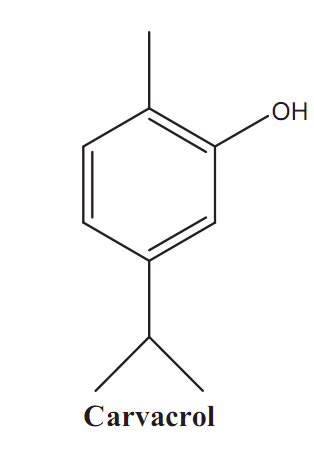

Downloads: 85
Author(s):
Field: Natural product chemistry and synthesis
Type: Research paper
Issue: 2016 Volume 11, no.1
Pages: 50-54
Elena Secara
Field: Natural product chemistry and synthesis
Type: Research paper
Issue: 2016 Volume 11, no.1
Pages: 50-54
Full Text (PDF): Download
DOI: dx.doi.org/10.19261/cjm.2016.11(1).06
Graphical Abstract: Synthesis of new drimane and homodrimane lactams, derivatives of octahydro-1H-benzo[d]azepine and octahydro-1H-benzo[c]azepine, from norambreinolide is reported. These compounds were prepared by Beckmann rearrangement of the corresponding ketooximes.
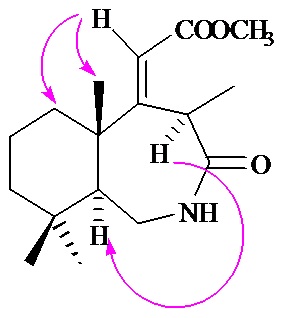
The article is Open Access by CC-BY 4.0 License
Cite this article as: E. Secara. Synthesis of New Drimane and Homodrimane Lactams by Beckmann Rearrangement of Some Ketoximes. Chemistry Journal of Moldova, 2016, 11(1), pp. 50-64. DOI: dx.doi.org/10.19261/cjm.2016.11(1).06
Article Source: Synthesis of New Drimane and Homodrimane Lactams by Beckmann Rearrangement of Some Ketoximes.
Download article metadata: CrossRef BibTeX CERIF Google Scholar DataCite Dublin Core
Downloads: 91
Author(s):
Field: Natural product chemistry and synthesis
Type: Research paper
Issue: 2015 Volume 10, no.2
Pages: 54-57
Ion Dragalin, Olga Morarescu, Maria Sedcenco, Radu Marin Rosca
Field: Natural product chemistry and synthesis
Type: Research paper
Issue: 2015 Volume 10, no.2
Pages: 54-57
Full Text (PDF): Download
DOI: dx.doi.org/10.19261/cjm.2015.10(2).06
Graphical Abstract: The accumulated as production waste fat from Faraon quail breeds has been investigated for the first time by using GC-MS technique, preventively converting it via methanolysis to fatty acid methyl esters. The test results, regarding the content of unsaturated fatty acids having a favorable to human body cis-configuration (77.8%), confirm their nutritional value and the possibility of using this fat in cosmetic, pharmaceutical and food industries.
Downloads: 71
Author(s):
Field: Natural product chemistry and synthesis
Type: Research paper
Issue: 2015 Volume 10, no.2
Pages: 58-61
Lidia Lungu
Field: Natural product chemistry and synthesis
Type: Research paper
Issue: 2015 Volume 10, no.2
Pages: 58-61
Full Text (PDF): Download
DOI: dx.doi.org/10.19261/cjm.2015.10(2).07
Graphical Abstract: The synthesis of new nitrogen-containing drimane and homodrimane sesquiterpenoids in cycle B is reported. A comparative study of the microwave (MW) assisted synthesis of drimenone versus classical conditions has been done. The drimanic and homodrimanic oximes were prepared on the base of ketones derived from commercially available sclareolide. The drimanic amine was obtained by reduction of corresponding oxime with LiAlH4. The structure of novel compounds was confirmed using IR, 1H and 13C NMR analyses.
Downloads: 76
